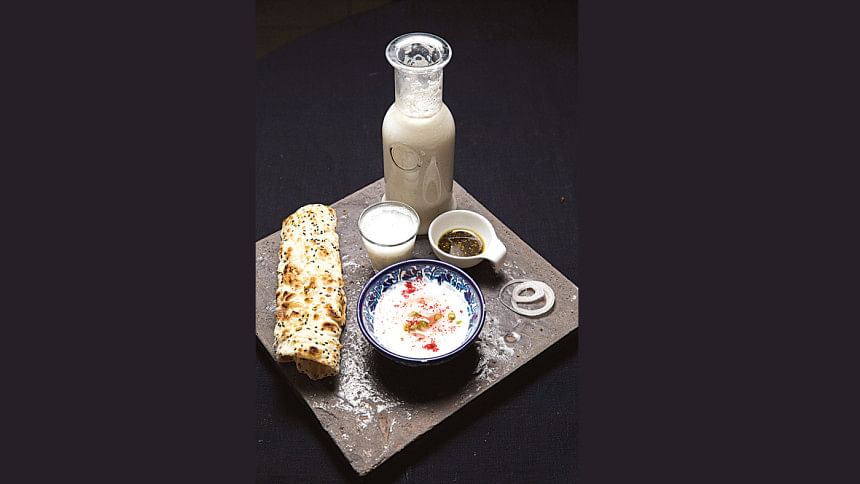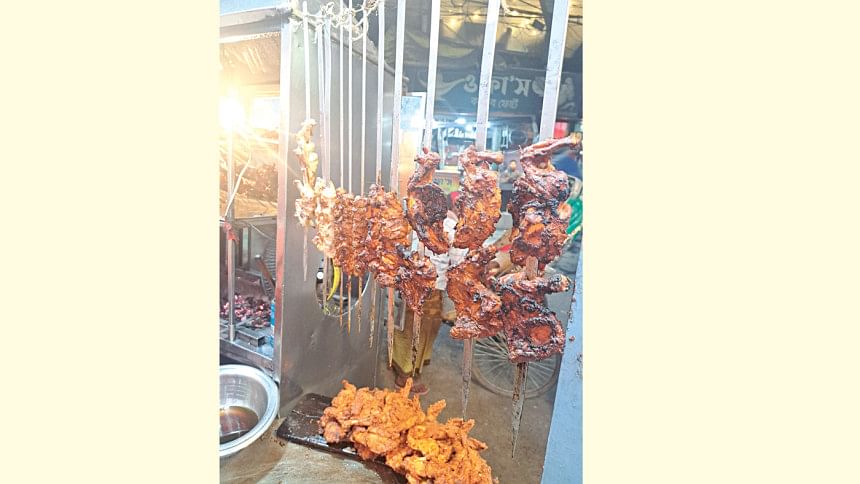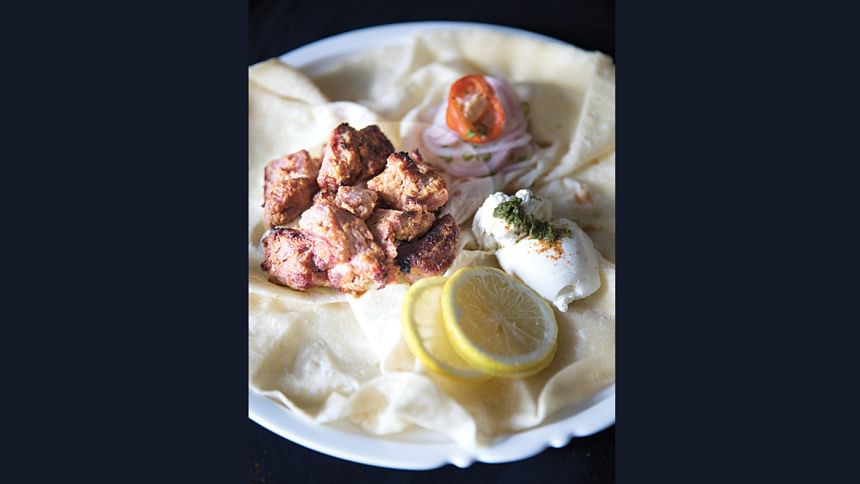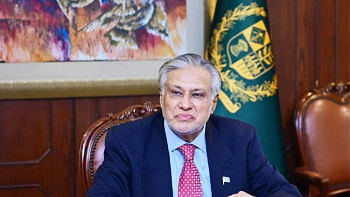Old Dhaka’s food trail: A nostalgic gastronomic adventure

I went to the Lalbagh area last Saturday to finalise an interesting project for My Dhaka readers (stay tuned), but this business meet-and-greet was unlike any I had ever attended or conducted. It was exactly the "Dhakai way" of dealings -- warm-hearted, raucous, and with a table full of delicious food.
Old Dhaka people genuinely have a way of winning your heart through your stomach. A simple cup of milk tea or a glass of chilled lassi with a kabab paratha roll is all you need to melt away.
I was waiting beside the fort gate in the parking lot that was lined with all sorts of snack vendors. The aroma of corn cobs being roasted on a coal fire, and peanuts being fried in a wok full of sand were inviting, but I chose to wait in front of an "aam shotto" cart.
Aam shotto is a sun-dried mango pulp roll mixed with sugar. This mouth-watering tangy snack cart had a line of buyers, waiting to get a pack of either the sweet aam shotto roll, or the sour one with a dash of rock salt and chilli flakes. Jalaluddin, the happy vendor, earns around Tk 800 a day.
But it was the worn-out wooden cash box, which also served Jalaluddin as a cutting board, that stole my heart. I tried in vain to buy it off him, and after a lot of laughs and paper packets full of aam shotto, we exchanged our cell numbers -- with me promising to haunt him till he makes a new one for himself and sells off the old one to me.

This type of bizarre meets is only possible in the narrow lanes of old Dhaka, where there is no pretence of class hierarchy, and every person is amiable and fun-loving.
Finally, when my mates came, we walked to the Mughal Kabab restaurant at the corner of Horonath Ghosh Road, opposite the pocket gate of the fort, to discuss our business agenda.
Informal and random, this place had the best juicy and tender kababs, done just right -- khiri kabab, beef boti, beef sheekh with rumali roti, and shukha paratha were just simply delightful.
The meal reminded me of a tiny three-storied kabab place beside the old Central Jail, where the evenings are at full gear, selling scores of orders of chicken tikka, chicken reshmi, mughalai beef sheekh, and parathas being sent down from the third-floor window, tucked in a bucket tied with a rope.
I had the best beef sheekh for just Tk 30 from an unknown roadside stall in Bakshi Bazar. Besides the popular restaurants, old Dhaka boasts tasty and tender kababs in all sorts of hole-in-the-wall restaurants.

I dare to compare the kababs here with Old Delhi, and believe me, Dhaka's Mughal cuisine recipe should be the only one to follow. The hype that old Delhi kababs enjoy falls flat in front of our old Dhaka kababs.
Kababs, Nihari, biriyani, and chaaps are decadent here in Dhaka. Marinated beef chunks in skewers, slowly roasted in an open coal fire can give any Delhi minced meat sheekh a run for its money.
In my childhood, my grandmother's lavish two-storied mansion in Purana Paltan was right beside Baitul Mukarram masjid, and all those lanes had restaurants lined up. Breakfast during weekends was vegetable labra and paratha, and transparent suji halwa, and evenings were about kabab, paratha rolls, and puri.
Neem shukha or Bakarkhani, and shutli kababs were sold by vendors coming to your doorstep till the 70's. Jhalfrezi, brain masala, and offal kabab were all the rage at Ruchita, a posh eatery in the late 70's at Bangabandhu Avenue. The beef chaap of the Provincial Hotel at the stadium market was considered the supreme treat of the times. These food tales and legacy continue to hold to date, with just the shops relocated deep inside the belly of the old town, rather than being on the fringes of Old Dhaka.

 For all latest news, follow The Daily Star's Google News channel.
For all latest news, follow The Daily Star's Google News channel. 



Comments